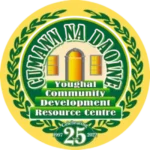The story behind the Community Development Programme:
The following is a brief guide to the story to date behind the Community Development Programme in the Republic of Ireland:
1990 – Community Development Programme established and 15 projects funded by the end of the year. The Programme was set up in recognition of the role of community development in tackling poverty and disadvantage, something that was common in Ireland in 1990. The Combat Poverty Agency and later other organisations are appointed as support agencies for the local projects.
1994 – Family Resource Centre Programme established and the number of projects in this programme also slowly expands to 10 centres by the end of the year.
1994 – Core-Funded Groups Programme (well, it actually had a longer title, but this is what it was known as) was established and 20 projects received funding.
2001 – The umbrella of the Community Development Support Programmes (CDSPs) comes into being, the aim being to bring about greater cohesion. There is great fanfare as it brings together nearly 200 projects funded under the Community Development Programme, the Family Resource Centre Programme and the Core-Funded Groups Programme. Mighty!
2002 – The new Department of Community, Rural and Gaeltacht Affairs was established by Government in June. The Family Resource Centre Programme is taken out of the CDSPs, given statutory status and set up as the part of the new Family Support Agency. So the shamrock loses a leaf. (However, at local level, projects brought together under the CDSPs continued to network and work together, no bad thing!)
2003 – 15 new projects are set up, bringing the number of Community Development Projects to 122. The number of Core-Funded Groups around the country stands at 48. A review is organised by Minister Éamon Ó Cuiv of the community and voluntary sector programmes and agencies funded by the Department of Community, Rural and Gaeltacht Affairs. And from now on, CDPs must get their workplans endorsed by City/County Development Boards. In most instances, this involved CDPs simply informing CDBs (yes, the acronyms can be confusing) about their work. One plus was that local authorities came to better understand the work of CDPs, and of the Programme itself. On the other hand, the process added to the workload of often resource-stretched local projects.
2004 – The CDSPs umbrella term becomes obsolete as the 48 Core-Funded Groups are re-named Community Development Projects. With all projects now known as CDPs, life becomes simpler (if only there hadn’t been so many changes since 1990). By now, the number of Community Development Projects in the Community Development Programme stands at 170 (there were only 15 in the beginning). Until now, the programmes have continued to grow and remain autonomous projects based in local communities receiving central funding support from the state through the new Department of Community, Rural and Gaeltacht Affairs. Regarding the support structures, the number of Regional Support Agencies is to be reduced from 13 to 6. Meanwhile, more Specialist Support Agencies have been set up.
2005 – Ten new CDPs are announced, however their autonomy is limited since the administrative work in running the new projects is farmed out to other existing local projects or organisations. In this way, the ‘hosting’ model is born.
2006 – As part of the Government’s Decentralisation Programme, the Community Development Unit of the Department of Community, Rural and Gaeltacht Affairs relocate to Tubbercurry, Co. Sligo in August. Staff turnover is significant. Minister of State, Noel Ahern, announces funding of €250,000 to employ extra staff in 14 CDPs. The new National Development Plan (NDP) includes reference to the Community Development Programme, which is viewed as a positive development by the thousands of people who are actively committed to the Programme’s aims.
2007 – The General Election results in the appointment of a Pat Carey as the new Minister of State for Community Affairs (while Noel Ahern moves to another Department). Minister Éamon Ó Cuiv retains the overall ministry. No new CDPs have been established for 2 years. In the meantime, new communities have sprung up, new estates have been built and the population of the Republic has expanded and changed demographically. Another review of the Programme is announced and submissions are invited, including from the public.
2008– A half-dozen projects and volunteers involved in CDPs won national awards for their Community Development work. Contracts with the Regional Support Agencies were not renewed and they were phased out/cut. The project representatives on the National Advisory Committee resigned. A new Minister of State was appointed, John Curran, from Clondalkin in Dublin. He is responsible for Community Affairs and for the National Drugs Strategy. He travelled the country visiting quite a number of projects for himself. Check out the news page of this website for more details on 2008 developments.
What CDPs do:
Some CDPs manage community centres and are responsible for (or, indeed, the catalyst for) bringing in multi-million-euro funding annually from a range of sources.
Other CDPs may belong to an umbrella group running a community centre. In both cases, the CDPs are expected to focus on members of the community who experience the most disadvantage and are the most vulnerable.
Where to find CDPs:
The projects in the Community Development Programme are based in disadvantaged communities within:
– inner-city areas;
– rural area;
– small towns.
Cumann na daoine enjoyed 11 yrs as a fully fledged CDP and even though changes happened at Government level in 2009, they continue to work from the principles and practices of community development
